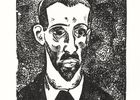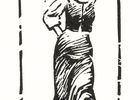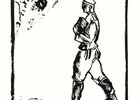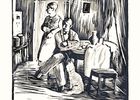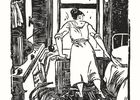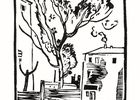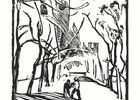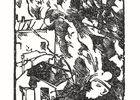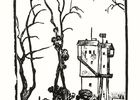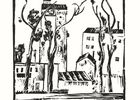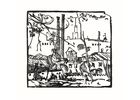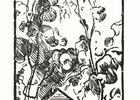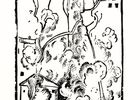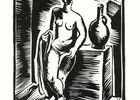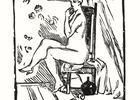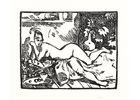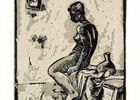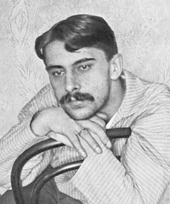
Painter,
graphiń artist, art theorist and educator.
Shevchenko
studied at a Kharkov non-classical secondary school (Russian realnoye uchilsche)
(1890–1898). In 1899, he moved to Moscow and was admitted to the Metalworking
Department with the Stroganov Arts and Technical School; in 1907, he graduated
from the Decorative Department. He later enrolled at the Moscow School of
Painting, Sculpture and Architecture (Konstantin Korovin’s class) where he was
very close with Mikhail Larionov; among his fellow students were Alexander
Kuprin, Robert Falk and David Burliuk (1907-1908). He took lessons at the Academie Julian and
the Academie Carriere in Paris (1905-1906),
participated in numerous exhibitions: Salon
Nezavisimykh [“The Salon of the Independent”] (1906), Bubnovy Valet [“The Jack of Diamonds”] (1910 and 1916), Osliny Khvost [“The Donkey’s Tail”]
(1911), Mishen [“The Target”],
“No.4”, Soyuz Molodezhi [“The Union
of Youth”] (1912-1914), Mir iskusstva
[“The World of Art”] (1913, 1917, 1921), also participated in the shows
arranged by the associations Makovets
(1922, 1925) and Tsekh Zhivopistsev
[“The Artists Shop”] (1928, 1930). He published a number of theoretical works:
“Neo-primitivism. Its Theory. Its Potentialities. Its Achievements”, “The
Principle of Cubism and Other Trends in the Painting of All Times and All
Peoples” (both came out in 1913), the “Colour-Dynamos and Tectonic Primitivism”
manifesto (1919).
After
the October 1917 revolution he worked at the Graphic Arts Department with Narcompros [People’s Commissariat of
Enlightenment] where he was a member of the Commission for the Protection of
Art Memorials and Relics of the Past (1918-1921). He collaborated with the
Russian Fine Arts Academy in starting the Museum of Painting Culture in Moscow
(1919). Shevchenko taught at 1st GSKHM
[The State Free Arts Studios] and INKHUK [The
Institute of Art Culture]. From 1920, he was professor at VKHUTEMAS [The Higher Art and Technical Studios].


